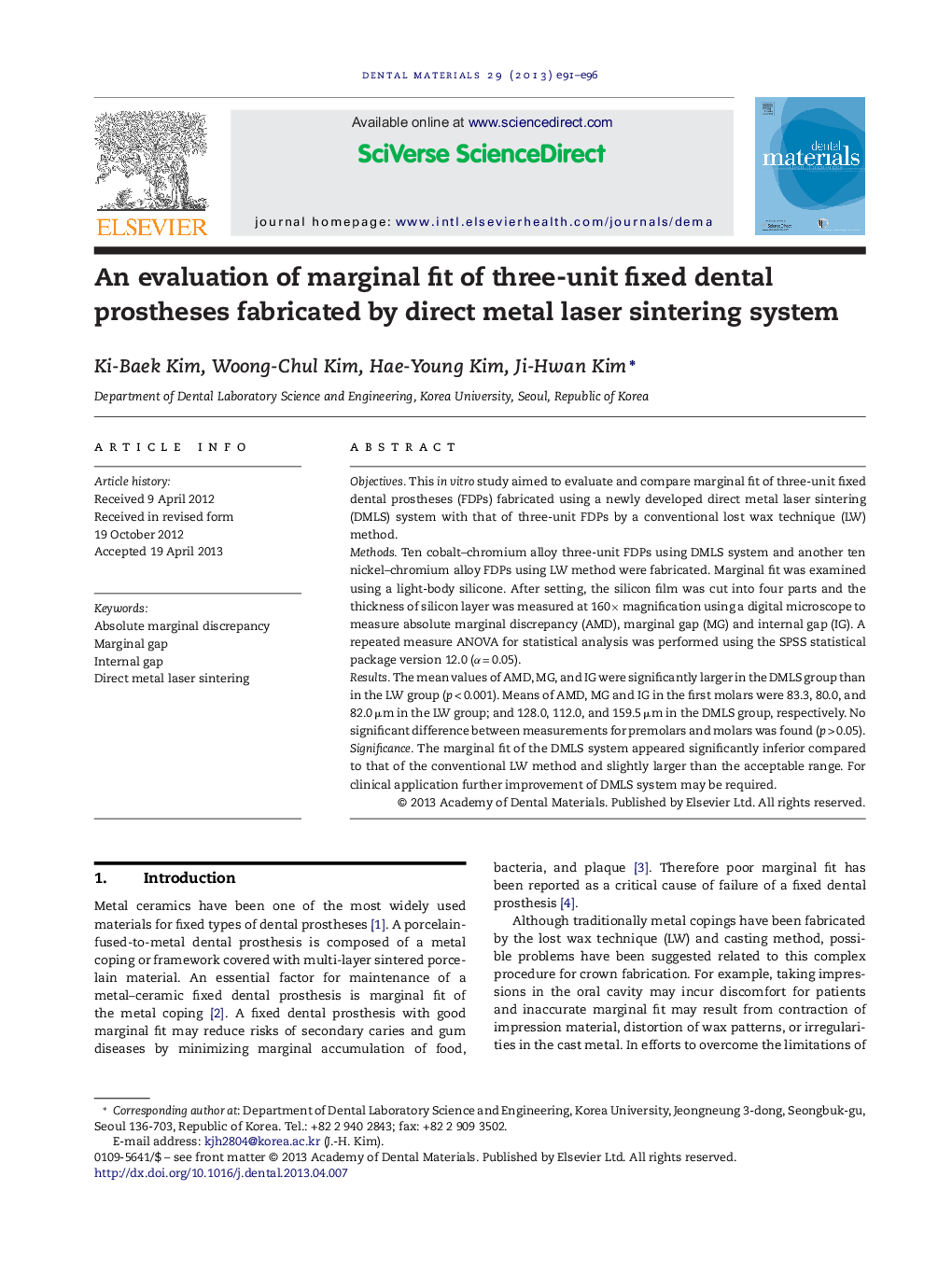| Article ID | Journal | Published Year | Pages | File Type |
|---|---|---|---|---|
| 1421216 | Dental Materials | 2013 | 6 Pages |
ObjectivesThis in vitro study aimed to evaluate and compare marginal fit of three-unit fixed dental prostheses (FDPs) fabricated using a newly developed direct metal laser sintering (DMLS) system with that of three-unit FDPs by a conventional lost wax technique (LW) method.MethodsTen cobalt–chromium alloy three-unit FDPs using DMLS system and another ten nickel–chromium alloy FDPs using LW method were fabricated. Marginal fit was examined using a light-body silicone. After setting, the silicon film was cut into four parts and the thickness of silicon layer was measured at 160× magnification using a digital microscope to measure absolute marginal discrepancy (AMD), marginal gap (MG) and internal gap (IG). A repeated measure ANOVA for statistical analysis was performed using the SPSS statistical package version 12.0 (α = 0.05).ResultsThe mean values of AMD, MG, and IG were significantly larger in the DMLS group than in the LW group (p < 0.001). Means of AMD, MG and IG in the first molars were 83.3, 80.0, and 82.0 μm in the LW group; and 128.0, 112.0, and 159.5 μm in the DMLS group, respectively. No significant difference between measurements for premolars and molars was found (p > 0.05).SignificanceThe marginal fit of the DMLS system appeared significantly inferior compared to that of the conventional LW method and slightly larger than the acceptable range. For clinical application further improvement of DMLS system may be required.
